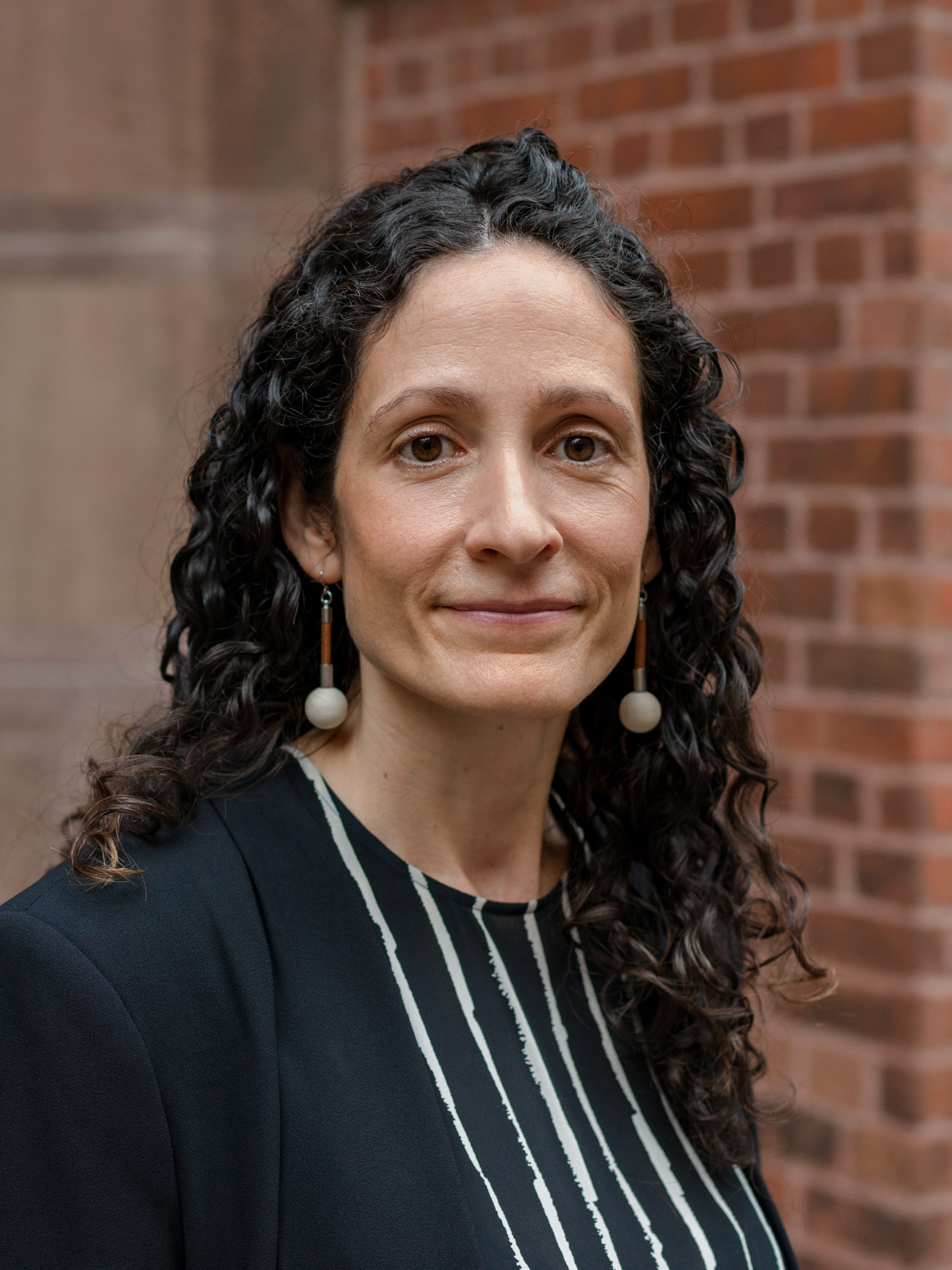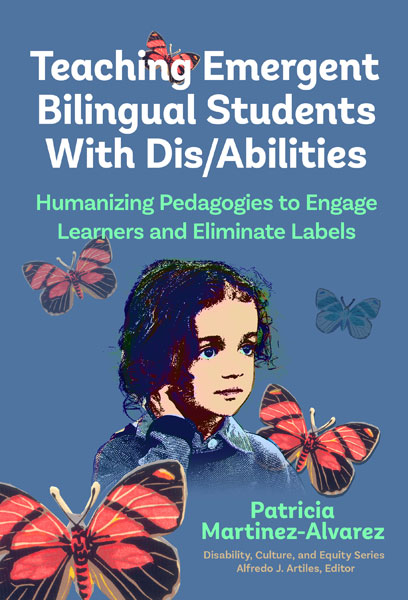 Patricia Martínez-Álvarez is an associate professor and director of the Bilingual/Bicultural Education program at Teachers College, Columbia University.
Patricia Martínez-Álvarez is an associate professor and director of the Bilingual/Bicultural Education program at Teachers College, Columbia University.
She is the author of Teaching Emergent Bilingual Students With Dis/Abilities: Humanizing Pedagogies to Engage Learners and Eliminate Labels.
As educators we need to do a better job at understanding how bilingual children who come from immigrant backgrounds learn, and how we can integrate their ways of learning, knowledges, practices, and rich linguistic repertoires during instruction. This requires us to rethink the cultural tools we are accustomed to using in our public school system. Such a process of rethinking needs to involve both inservice and preservice educators, as well as the programs preparing them.
The importance of rethinking processes that programs use for preparing preservice teachers, as well as those inservice teachers are already using during instruction, is made clear once we embrace the realization that the way we understand bilingual children’s learning is deeply ingrained in our educational system’s history and culture.
Preservice teachers are acculturated into the ways teaching and instruction are situated during their preparation experiences. Throughout these early experiences, certain ways of doing things are positioned to be the model practices to follow for their future teaching. The methods favored in teacher preparation programs can be understood as cultural products. Such cultural products form the figured worlds guiding the preparation of educators, while the processes for preparing teachers can be understood as “cultural vehicles for identity formation” (Holland et al., 1998, p. 71). Teacher educators use such cultural tools or vehicles to ensure the teacher candidates in their programs enter the figured worlds they have created over the years (Holland et al., 1998). Teacher candidates typically do well and graduate if they embrace the cultural tools used during their teacher preparation programs.
If given the opportunity, teacher candidates can develop solid teacher identities as they actively participate in student teaching experiences, discuss theory and empirical work in their courses and research experiences, and engage in projects related to their future practice. Their personal values, principles, beliefs, teaching dispositions, prior knowledge, and prior learning experiences also act as artifacts that will impact their developing teaching identity (Graus et al., 2022).
As teachers enter the classroom, new cultural tools become available to inform them about what good teaching looks like, which often creates philosophical and practical tensions for teachers in their first few years of practice. In most schools, teachers will have to embrace the cultural tools of grades, reading levels, tests, and strict scope and sequence guidelines for curriculum implementation. Some of these tools, unfortunately, fail to reflect the learning of bilingual children and might contrast with those preservice teachers encountered in their preparation programs. Bilingual children with immigrant backgrounds have family histories and experiences that differ from the perceived “average” learner for whom these cultural tools were designed. As bilingual children arrive to U.S. classrooms, their ways of learning, practices, knowledges, and linguistic repertoires are not valued enough, or are not used for more academic, or formal, learning in schools. This distance results in deficit views about the ability bilingual children possess.
As a result, these children are situated as lacking, and educational systems and their actors (teachers, administrators, specialists, etc.), try to help by generating new tools that still surface from the same cultural understandings.
The label “English language learner,” designed to ensure equal opportunity to learn while bilingual children learn the majoritarian language of instruction, is one such cultural tool. Unfortunately, research shows that the services such labels secure for bilingual children do not always help these children add new, challenging experiences and rich language exposure with comprehension to their existing repertoires. Instead, some English language learners end up carrying this tag throughout their educational career. Others exit out as language proficient, at the cost of losing their heritage language competence. Furthermore, the perceived lack of “school” language proficiency in these children can escalate to their being identified with a disability.
Bilingual children who are learning the language of instruction and lack familiarity with some of the tools that connect to being a reader in America’s classrooms might not readily learn through the methods most widely used in classrooms today. The contrast across cultural tools is particularly evident in literacy teaching and learning. Difficulties with literacy, and specifically with reading development, is one of the main reasons bilingual children are identified as having a disability. When this occurs, the misidentification is most often with “soft” disability categories, like learning disability or speech and language impairment. This suggests that bilingual children’s ways of speaking and engaging in meaning making (i.e., literacy processes) continue to be understood as being outside the figured world that we conceive of as the formal or academic space. Once again we see that disability-related services might end up not leading to more equal learning opportunities for bilingual children, but instead restricting their learning in multiple ways. Bilingual children experiencing difficulties can be double labeled by systems to ensure services that end up worsening their learning experience. What to do with this conundrum? I believe fostering the humanity present in virtues like simplicity and humility might be transformative in this respect.
Humanistic approaches to teaching and research can honor children’s knowledge and practices, including their ways of speaking, and can help us understand the centrality of children’s agentive efforts while in schools. For instance, a girl who expresses her assets as being loving, being a good friend, playing with her grandmother, or painting need to be recognized as possessing multiple abilities for learning in the classroom. The child that realizes the need to be prepared to receive and support another student who missed one of the learning sessions is recognizing what is most important in our busy classrooms. Simplicity and humility: virtues that are central in many Hispanic cultures, and tools that can help educators and educational leaders recognize the limitations of their knowledge. With these virtues, our classrooms can be transformed into learning communities in which all members depend upon one another, moving away from competitive notions of learning privileged by neoliberal, market-oriented systems.
In Teaching Emergent Bilingual Students with Dis/Abilities, I propose hybrid and humanizing pedagogical moments (Martínez-Álvarez, 2023). These are vulnerable moments in which we listen to children’s voices and recognize them as essential to teaching and learning. Let’s realize that these moments are already taking place as educators interact with bilingual children. What we still need to do is to elevate these hybrid and humanizing moments to their rightful place as one of the rigorous, valuable learning experiences in our schools. I end with what I hope is a provocative question for inservice and preservice teachers and those who prepare them: can we develop the humility to recognize our own shortcomings and elevate hybrid and humanizing moments as cultural tools to use while teaching and learning?

Teaching Emergent Bilingual Students With Dis/Abilities
Humanizing Pedagogies to Engage Learners and Eliminate Labels
Patricia Martínez-Álvarez
Photo by Thirdman
